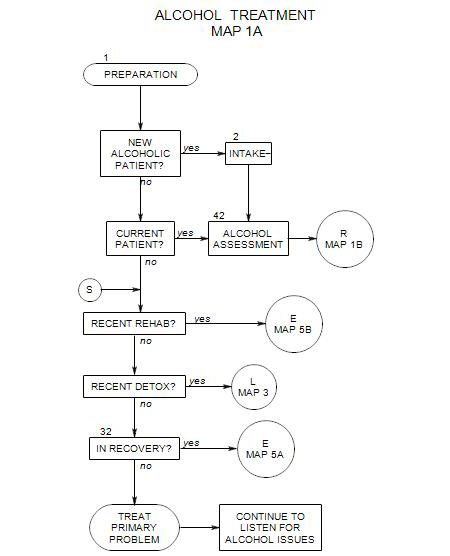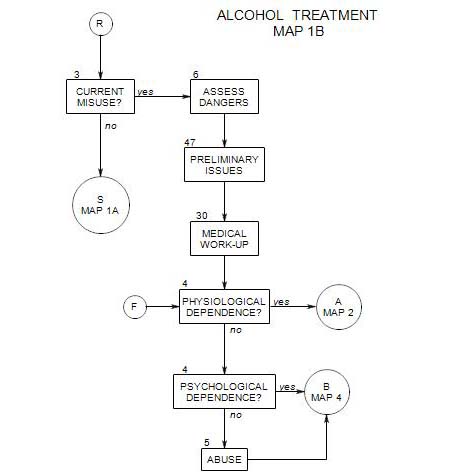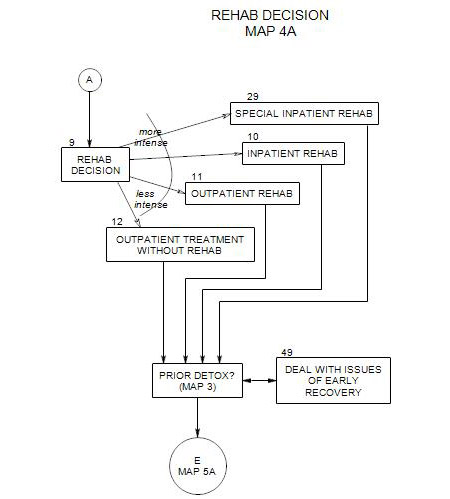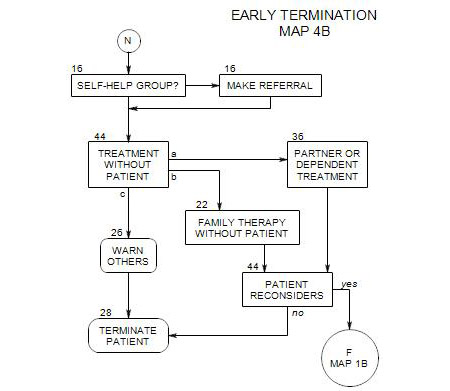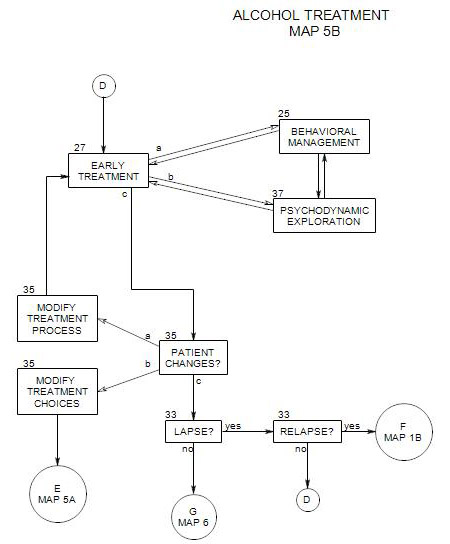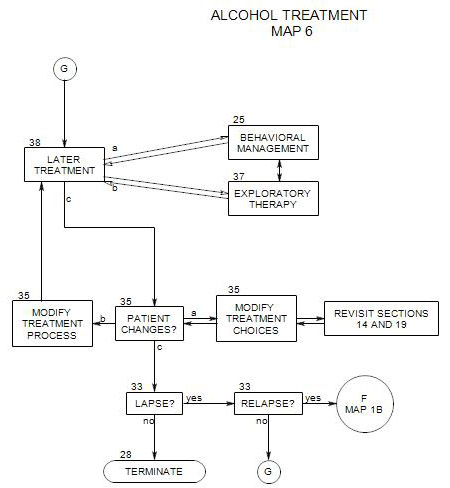4. PSYCHOLOGICAL AND PHYSIOLOGICAL DEPENDENCE
- This section is intended to be used in conjunction with Section 2, Section 3, and Section 42, making use of information gathered in intake sessions.
General symptoms of dependence on alcohol were listed under “Alcohol Misuse’ in Section 3d. Dependence differs from abuse mainly in being ongoing rather than episodic.
There are a number of criteria for evaluating an individual’s level of dependence upon alcohol. Among the most important are –
- chronicity, or the length of time that a person has been dependent. With time, a person changes, the consequences of drinking become more pervasive, and alternatives to drinking are harder to access.
- frequency and amount of drinking. The more often a person drinks, the more he/she limits other opportunities and alternative choices. The greater the amount, the greater the damage done each time.
- negative consequences of drinking, including the extent to which the person’s life and judgment have been compromised. A person who is dependent on alcohol will most likely continue to drink, even in the face of clear evidence that drinking is having serious negative consequences (e.g.: blackouts, accidents, or behaving badly).
The extent of a person’s dependency can’t be defined precisely by the quantity that he/she drinks [although there are guidelines that can help] but rather by the place of drinking in the person’s life and functioning. A dependent person needs alcohol in order to function while at the same time functioning less effectively because of it.
4a. Psychological Dependence
The psychologically dependent patient is convinced that he/she needs alcohol on a regular basis to function interpersonally, vocationally, or when alone, e.g.: to participate in relationships, to maintain employment, to sleep, to meet new people, etc.
The psychologically dependent person may or may not also be physiologically dependent. However, there is a tendency for psychological dependence to turn into physiological dependence, if the person’s perceived need increases in quantity or frequency over time. When a person is both psychologically and physiologically dependent, the physiological dependency must typically be treated first.
There are also degrees of severity of a person’s psychological dependence. For example, a person may feel a strong need to drink, before a social event, yet be able to function effectively without it. Another person may avoid all situations where alcohol isn’t available to help manage his/her social anxiety.
4b. Physiological Dependence
This occurs when the patient’s body has adapted to regular use of alcohol, to the point that stopping regular use may lead to physical withdrawal symptoms.
A person is probably physiologically dependent if he/she
- regularly drinks enough to get drunk (3 or more drinks per day, depending on the person’s size) A person may be willing to talk about how he/she was feeling when drinking; that could give clues about the amount or about being drunk.
- drinks regularly enough that alcohol is never completely out of his/her system. A person who sips vodka all day would fit this category.
- starts each day with a drink. Asking when the person has his/her first drink each day may get at this.
One test is whether the person has gone without drinking for a day or more in the past few weeks. If the person was able to go without drinking for a couple of days or more, find out for how long and what happened. After 18-36 hours, a physiologically dependent person will start to experience withdrawal symptoms [listed below], as blood alcohol level lowers substantially. A patient who can’t abstain for 36 hours may be presumed to be physiologically dependent.
WITHDRAWAL SYMPTOMS can include:
- Alteration in mood, especially anxiety, irritability or depression.
- Psychological distress.
- Impaired functioning at work and elsewhere.
- Increased autonomic activity: sweating or rapid heartbeat.
- Speeded-up psychomotor activity.
- Hand tremor or worsened hand tremor.
- Sleeplessness or frequently interrupted sleep.
- Nausea or vomiting.
- Short-lived hallucinations or delusions (visual, tactile, auditory).
- Grand mal seizures.
In an uncomplicated withdrawal, the symptoms may feel intense but they are brief, peak on the second day, and last only a few days. But the anxiety, irritability, and sleeplessness may persist for a few days longer.
The heavier the patient’s drinking has been, the more severe the patient’s symptoms are likely to be. DT’s (delirium tremens: seizures, shaking, night sweats) are relatively rare: only about 5% of patients hospitalized for detox actually get them.
People who are physiologically dependent are assumed to be psychologically dependent as well.
Withdrawal can be life-threatening. A medically supervised detox is strongly indicated. [See Section 7: Detox]
References:
- Bucholz, Homan and Helzer, 1992
- DSM IV, p.195-196
